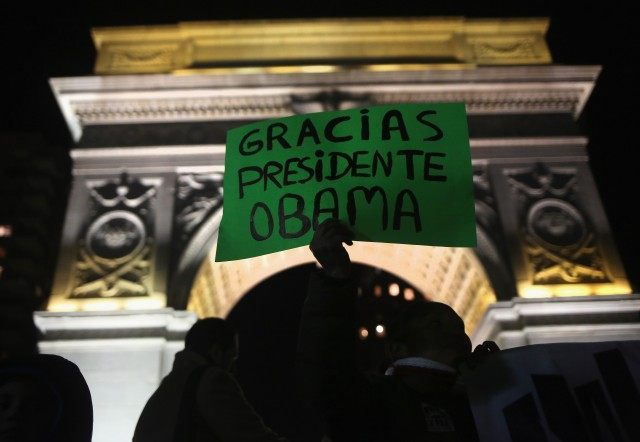A majority of the illegal aliens the Department of Homeland Security attempted to remove from the United States so far this fiscal year have been shielded from deportation by immigration judges.
According to government statistics analyzed by the Syracuse University-based Transactional Records Access Clearinghouse, during the first ten months of this fiscal year, immigration judges ruled that 96,223 aliens who the government sought to deport could remain in the U.S., a level on pace to exceed the record 106,676 noncitizens judges determined could remain in the U.S. last fiscal year.
The judges’ determinations in favor of an alien remaining in the U.S. accounted for 56.8 percent of the cases judges have determined this fiscal year to date, or October 2015 through July 2016, according to TRAC.
Of the aliens judges ruled could remain in the U.S., 25 percent were from Mexico and 44 percent were from one of three Central American countries that have been the source of a recent swell of illegal immigration by unaccompanied minors and family units, specifically El Salvador, Guatemala, and Honduras.
“There are a number of reasons why an individual may be allowed to remain in the country. For example, the judge can find that the government did not meet its burden to show the individual was deportable. Or, the judge may have found that the individual was entitled to asylum in this country, or may grant relief from removal under other provisions of the law,” TRAC explained in its analysis, noting that there are other reasons an alien may avoid deportation, like the government may also close cases via “prosecutorial discretion.”
Across the 55 immigration courts in the U.S., according to TRAC’s analysis, the Phoenix Immigration Court had the highest share of aliens ruled allowed to remain at 82.2 percent. The New York Immigration Court had the second highest proportion of aliens determined to be allowed to remain, at a rate of 81.5 percent. The Denver Immigration Court (78 percent), San Antonio Immigration Court (76.8 percent), and Miami Immigration Court (75.8 percent) offered the third, fourth, and fifth most “remain” judgements.
As TRAC highlighted, those courts with the lowest share of “remain” determinations were courts that handle cases for aliens in detention facilities.
“At the other extreme were the Oakdale, Louisiana, Lumpkin (Stewart), Georgia, and Napanoch (Ulster), New York Immigration Courts where only between 11.3 percent and 17.5 percent of the individuals were allowed to remain in the U.S.,” TRAC noted.

COMMENTS
Please let us know if you're having issues with commenting.